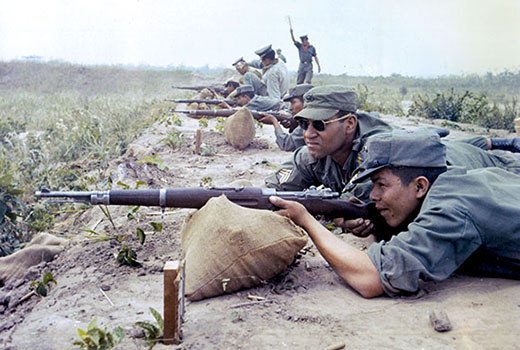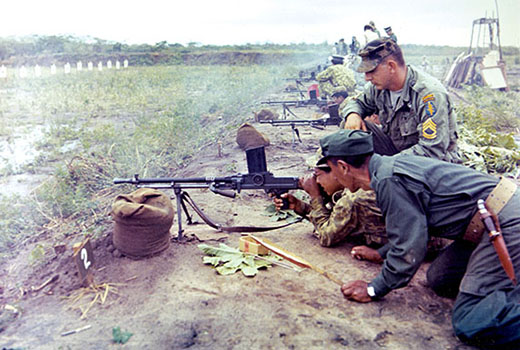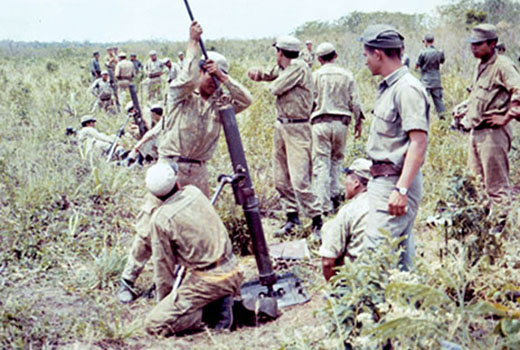FULL SERIES: SF IN BOLIVIA
- Beggar on a Throne of Gold: A Short History of Bolivia
- The 1960s: A Decade of Revolution
- The Sixties in America: Social Strife and International Conflict
- Che Guevarra: A False idol for Revolutionaries
- The ‘Haves and Have Nots’: U.S. & Bolivian Order of Battle
- “Today a New Stage Begins”: Che Guevara in Bolivia
- Turning the Tables on Che: The Training at La Esperanza
- Che’s Posse: Divided, Attrited, and Trapped
- The 2nd Ranger Battalion and the Capture of Che Guevara
- The Aftermath: Che, the Late 1960s, and the Bolovian Mission
DOWNLOAD

When they arrived in Bolivia in April 1967, the 8th Special Forces Group Mobile Training Team (MTT) commanded by Major (MAJ) Ralph W. “Pappy” Shelton was literally the “tip of the spear” of the American effort to support Bolivia in its fight against a Cuban-sponsored insurgency. The 16 men represented a miniscule economy of force for the 1.4 million-man U.S. Army in 1967 that was fighting in South Vietnam and which was the bulk of the North Atlantic Treaty Organization (NATO) forces defending Europe against the Soviet-led Warsaw Pact. In stark contrast was the Bolivian Army, a 15,000-man force of ill-trained conscripts with out-moded equipment, threatened by an insurgency. This friendly order of battle article will look at the United States Army forces, in particular those units and missions supporting the U.S. strategy in Latin America. It will then examine the Bolivian Armed Forces after the 1952 Revolution and the state of the Bolivian Army when MAJ Shelton and his team arrived to train the 2nd Ranger Battalion. It was clearly a case of the “Haves and Have-nots.”
The United States Army of 1967 was a formidable force of thirteen infantry divisions, four armored divisions, one cavalry division, four separate infantry brigades, and an armored cavalry regiment.1 In the Continental United States (CONUS) were two divisions (the 82nd Airborne and the 2nd Armored Division). The 25th Infantry Division was based in Hawaii (forward-deployed in Vietnam). In Alaska was the 172nd Separate Infantry Brigade. The 1st Special Forces Group was based in Okinawa, Japan, and the 7th Special Forces Group at Fort Bragg, North Carolina. Two infantry divisions, the 2nd and 7th, were stationed in South Korea.2 The bulk of the U.S. Army was deployed to Vietnam or stationed in Europe.
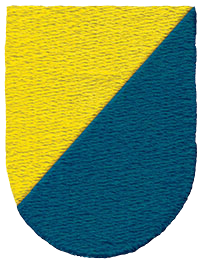
Five infantry divisions (the 1st, 4th, 9th, and 25th), one partial airborne division (the 101st), the 1st Cavalry Division and the 11th Armored Cavalry Regiment, and three separate infantry brigades (the 196th, 199th, and 173rd Airborne) were in South Vietnam, where U.S. forces numbered roughly 400,000 in August of 1967.3 Special operations forces, under the control of 5th Special Forces Group (5th SFG), in 1967 numbered 2,745 personnel.4 In Europe, the U.S. Army had declined from a peak in 1962 of 277,000 to roughly 220,000 in 1967. Seventh Army had two Army Corps, the Vth and VIIth, composed of four infantry divisions (the 3rd, 5th, 8th, and 24th) and two armored divisions (the 1st and 3rd), and the 10th Special Forces Group. Elsewhere, smaller U.S. Army contingents performed economy of force missions. This was the case in Latin America.
Central and South America were the responsibility of the United States Southern Command (SOUTHCOM). The Commander, General (GEN) Robert W. Porter, defined his tasks as “Defense of the Panama Canal, administering the Military Assistance Program (MAP) for Latin American countries, directing U.S. participation in hemispheric defense exercises, mapping and charting activities, and directing disaster relief and search and rescue operations.”5 SOUTHCOM was the only unified command with its own security assistance office. That indicated how important the command considered military assistance to the countries of Latin America.

The Army component command of SOUTHCOM was U.S. Army Forces Southern Command (USARSO), based at Fort Amador, in the Canal Zone of Panama. USARSO was commanded by Major General (MG) Charles L. Johnson.6 The 193rd Infantry Brigade had three battalions, one airborne, one mechanized, and one light infantry. Other major USARSO units were the 4th Missile Battalion (HAWK), 517th Air Defense Artillery Regiment, the 470th Military Intelligence Group, the 3rd Civil Affairs Group, U.S. Army School of the Americas, and the 8th Special Forces Group configured as a Special Action Force (8th SFG SAF).7 The primary focus of USARSO was the defense of the Canal Zone.8 The Army was represented in U.S. Military Groups (MILGP) throughout Latin America.
A relatively new concept in 1967, the MILGP and the Defense Coordination Office replaced the Military Assistance Advisory Group (MAAG) in SOUTHCOM. It was a joint organization. As described by GEN Porter, “We have military groups in 17 Latin American countries, ranging in size from 5 persons in Panama to 103 in Brazil. The main thrust of the MILGP effort is to assist the host country armed forces in developing their internal security capability.”9 When the 8th SFG advanced echelon (ADVON) went to Bolivia, they learned how the MILGP provided support, mostly by liaison.
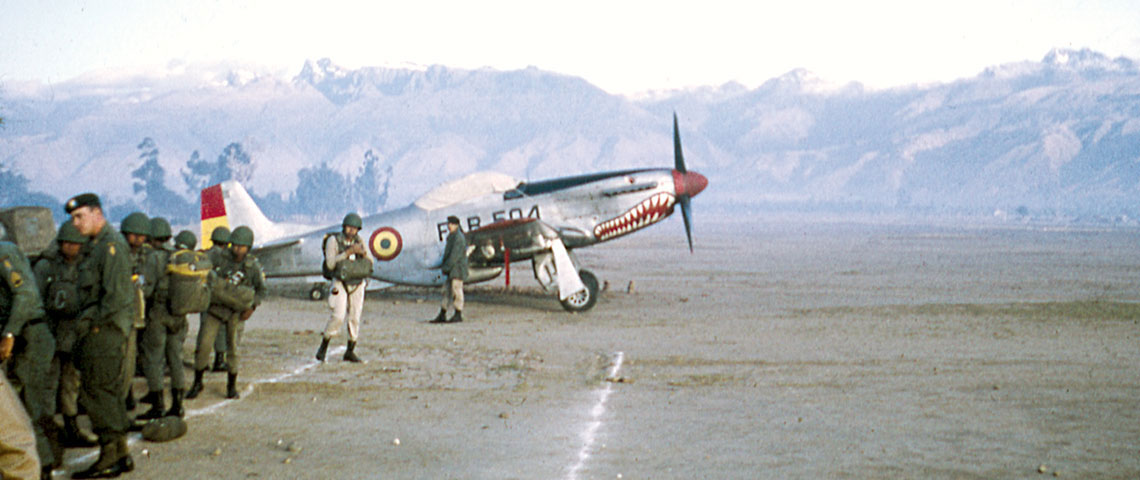

The MILGP was the “doer” for military support on U.S. Ambassador Douglas Henderson’s country team. Lieutenant Colonel (LTC) Joseph Rice headed the MILGP detachment in Cochabamba advising the Bolivian Army NCO Academy, the Escuela de Armas, and the Bolivian Airborne School. He assumed the role as Ranger Battalion Project Officer. Visiting units outside La Paz was difficult because of the terrain and the primitive Bolivian road network. The mission of the MILGP was to assist the Bolivian military with its internal security. This was critical because Bolivia’s military was ill prepared to combat the growing internal insurgency.

In 1967, the Bolivian Armed Forces had three services, the Navy, the Air Force, and the Army. The National Police Corps, Cuerpo de Policia Nacional, under the Ministry of the Interior was the same size as the Army and had a national security role. The Navy, (Fuerza Naval Boliviana) which included the Marines, was an 1,800-man force with four small patrol boats (purchased from the United States) patrolling Bolivia’s part of Lake Titicaca and its major river systems.10 The Air Force, (Fuerza Aérea Boliviana) numbered less than 4,000 personnel. It had a mix of World War II and Korean War-era aircraft such as the B-25J Mitchell bomber, C-47 Skytrain, F-51D Mustang, and T-28A Trojan trainers. In 1967 the Air Force had Hiller and Sikorsky helicopters.11 The 15,000-man Army (Ejército Boliviana), the largest of the three services, was responsible for combating the guerrillas. It was not well equipped for the counter-insurgency mission.
Bolivia’s disastrous defeat by Paraguay in the Chaco War (1932-1935) still affected the Army in the 1960s. Chaco veterans were instrumental in the success of the 1952 revolution that brought the Movimiento Nacionalista Revolucionaria (MNR) party to power. The MNR actually dismantled the Army after taking power, replacing it with “Peoples’ Militias” for three months.12 Reestablished in July 1953, the new Bolivian Army was oriented more towards conducting civic action projects than the national defense. Eight Army divisions (of U.S. brigade size) were posted regionally throughout the country. However, most of the 15,000 soldiers were building roads and supporting agricultural programs. Only 3,000 manned the small company-sized cuartels, principally in the Altiplano.13 The operational readiness was in constant turmoil because each year half of the soldiers came to the end of their service. Fortunately, road building and planting potatoes did not require modern weaponry, for the Army was sorely lacking in equipment.
The Bolivian Army at this time possessed a hodge-podge of weapons from a variety of sources. The standard rifle for the Bolivian soldier was the Czech-made Mauser 7.62 mm rifle left over from the Chaco War.14 The Army’s crew-served weapons were primarily pre-World War II Colt and Vickers 7.65 mm water-cooled heavy machine guns; Czech ZB-30 7.92 mm light machineguns; French 82 mm mortars and some 75-mm howitzers.15 In 1959, the first shipment of American post-Korean War weapons arrived as part of the military assistance program to Bolivia. A battalion’s issue of .30 caliber Garand M-1 rifles and M-1 carbines, Browning Automatic Rifles (BARs), M-1919A6 light machine guns, 60 mm mortars, 57 mm recoilless rifles, and 3.5-inch rocket launchers were the first installment of a growing American investment.16 The United States provided over 12 million in Military Assistance Program dollars to Bolivia by 1967.17 In the 1960s, Bolivia made slow, incremental progress in improving the Army’s capability.

